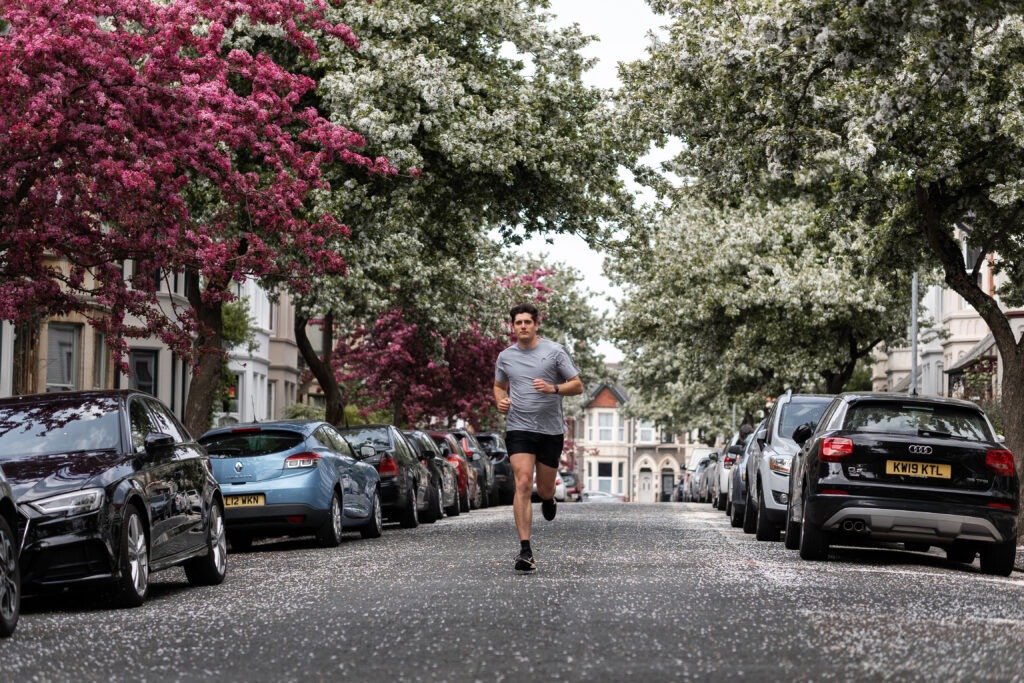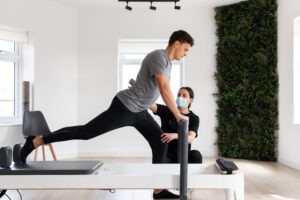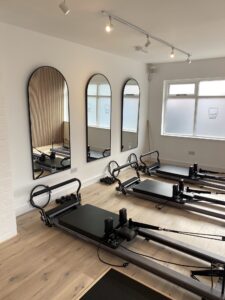Pilates is a form of low impact strengthening, first developed during the first World War as a rehabilitation tool for soldiers following injury. Pilates primarily focuses on enhancing trunk control and stability by strengthening core muscles and glutes. Considering the low impact nature of Pilates, it is an extremely suitable form of cross-training for runners and those returning from running injuries. Many runners neglect strength training, for fear it will increase muscle bulk, or impact upon their cardiovascular fitness. Pilates is the perfect complement to running, and with it comes multiple benefits relating to running performance and injury prevention.

Running, particularly road running is a repetitive sport, and runners are often at risk of developing overuse injuries. When running we are recruiting the same muscles over and over again, in the same way, and always moving in the same plane of movement. The benefits of Pilates on running performance are supported by research by enhancing muscle activity (Finatto et al. 2018) and improving functional movement in recreational runners, thus significantly reducing injury risk (Laws et al. 2017).
The key focuses of Pilates are movement control, joint alignment, centering and breath-work. Pilates aims to lengthen and strengthening muscles, often working them eccentrically. This means loading muscles as they lengthen, a component of muscle strength vital for joint control and alignment, particularly of the frequently injured knee.

Pilates improves neuromuscular control of joints, by improving strength and recruitment of the smaller muscles of the body responsible for joint positioning, particularly at the point of impact. An important example is pelvic and knee position when running. Reduced control and stability around the pelvis,
often leads to a medial (inward) drift of our knee as we bend it under load. This may not be an issue on shorter runs, however, on longer runs especially as we begin to fatigue, the risk of stressing tissues of the hip and knee beyond their capacity is likely, consequently leading to injury. Improving strength of muscles of the trunk and pelvis allows us to generate more power through lower limbs, improving running efficiency and speed.
Muscle tightness is a common running complaint. While there is some focus on mobility and flexibility in pilates, it is the strengthening through range which helps diminish this feeling of tightness.
Tight muscles are often w
eak muscles. Improving muscle endurance and capacity to work in the same way over and over again, reduces overall fatigue, therefore reducing the onset of muscle tightness as we run.

Breath-work is another key focus of pilates, and aids in reducing intra-abdominal pressure, in turn enhancing core muscle recruitment. This can positively influence breathing patterns when running, reducing unwanted muscle tension throughout the body. Consequently this improves running efficiency by reducing overall energy expenditure.
Pilates classes at PhysioSpace are physio led which is useful in cases where clients are returning from injury or trying to focus on a specific area of weakness or imbalance which may be affecting their running performance. We teach both mat and reformer based pilates classes, each offering different and unique challenges to start you on your pilates journey.

